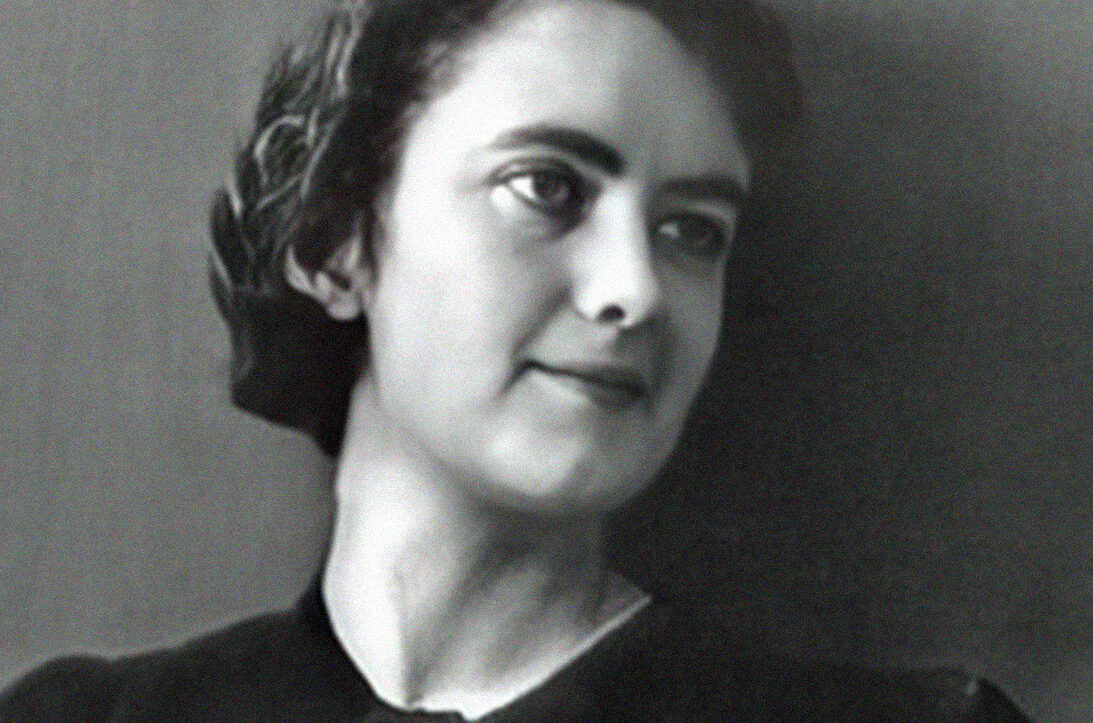Many in the nonproliferation community have weighed in on Christopher Nolan’s portrait of “Oppenheimer,” praising the film for its historical accuracy pertaining to the bomb’s creators while critiquing its lack of representation of the victims of its creation. Manhattan Project historian, Chris Griffth, praised the film for technical detail. The Belfer Center lauded the film for the general relevancy of its theme. John Earth and Anna Schumann at the Center for Arms Control and Nonproliferation acknowledged its historical accuracy while criticizing the “underdevelopment” of Nolan’s female characters. Yet, much to my dismay, I’ve yet to find a note specifically on the erasure of Jean Tatlock’s bisexuality from Nolan’s adaptation of this episode in global history.
Based chronologically — and at times verbatim — on Kai Bird and Martin J. Sherwin’s Pulitzer Prize-winning biography, “American Prometheus: The Triumph and Tragedy of J. Robert Oppenheimer,” I see no reason for Nolan to warp Bird and Sherwin’s narrative of Tatlock. Her sexuality, her suicide, her influence on Oppenheimer’s thought, work, and security clearance hearings are all important — and a part of history that impacts a global LGBTQ+ community simply because she was a part of it. For the film’s length, budget, and cast, I believe Nolan had a social and cultural obligation to represent Tatlock for who she was: the queer influence on Oppenheimer’s personal and political thought.
Who Was Tatlock to Oppenheimer?
Tatlock was an American psychiatrist and reporter for the Communist Party USA’s publication “Western Worker.” She was 22 years old and ten years younger than Oppenheimer when they were introduced at a house party through his landlady, Mary Ellen Washburn, who also happened to be Tatlock’s lover. “Prometheus” dives intimately into the details of Tatlock’s on-again, off-again romance with Oppenheimer, but the film fails to give their relationship any nuance or depth.
Tatlock had a profound influence on Oppenheimer’s political and philosophical thought and activism.
Through Nolan’s gaze, Tatlock, played by Florence Pugh, is hypersexualized. From manic-depressive crying spells to dumping Oppenheimer’s flowers in the trash, Nolan’s Tatlock appears emotionally detached, cold, and hysterical at times. By representing Tatlock in this way, Nolan failed to capture her true romantic, intellectual, and mutual bond with Oppenheimer, to whom she was engaged twice.
Tatlock had a profound influence on Oppenheimer’s political and philosophical thought and activism, immersing him in left-wing circles from the time they met in 1936. Through her affiliation with Communist Party USA at Berkeley, Tatlock introduced Oppenheimer to fellow Communist Party members Kenneth May, John Pitman, Aubrey Grossman, Rudy Lambert, and Edith Arnstein. Oppenheimer met Haakon Chevalier, who later fell under suspicion for espionage, through Local 349 of the Teacher’s Union at Berkeley, which held regular political discussion salons between 1937 and 1942. During her time at Stanford Medical School, Tatlock also introduced Oppenheimer to the Peters’ and to Dr. Thomas Addis, whose left-wing politics influenced Oppenheimer’s anti-fascist activism and donations to the United American Spanish Aid Committee.
According to Kai and Sherwin, Ernst Lawrence, Oppenheimer’s friend and colleague, had a particular distaste for Oppenheimer’s shift toward political activism and social causes, once erasing a chalkboard invite to a cocktail party to benefit Spanish Loyalists in his lab. It’s this shift in his social consciousness and the connections Oppenheimer made through his relationship with Tatlock that were politicized and rigorously scrutinized during the 1954 Atomic Energy Commission hearings.
Oppenheimer’s attraction to the field of psychology, particularly Erikson’s work on “identity formation,” was also encouraged by Tatlock, herself a psychiatrist. He studied psychoanalysis under the Marxist Freudian Dr. Siegfried Bernfield, who analyzed Tatlock as part of her training. Tatlock also introduced Oppenheimer to the poems of John Donne, which inspired him to name the first detonation of a nuclear weapon “trinity.”
Nolan Gave Into Hollywood Tropes
Nolan’s Tatlock is confident in her femininity and sexual prowess, but reality was quite different. Shirley Streshinsky and Patricia Klaus document that Tatlock once wrote to a friend: “There was a period when I thought I was homosexual. I still am, in a way, forced to believe it, but really, logically, I am sure that I can’t be because of my un-masculinity.” Bird and Sherwin note that her Freudian psychoanalytic training compelled her to view her sexuality as pathological. Furthermore, Tatlock’s friend reported that she confided she was a lesbian and “in an effort to overcome her attraction to women she had slept with every ‘bull’ she could find.” In their footnote, Mildred Stewart and Dorothy Baker, two prolific LBTGQ+ literary figures in California, attest to her bisexuality.
Oppenheimer, however, wasn’t just another bull in Tatlock’s life with a masculine ego as big as death to help her repress her love of women. In the film, Nolan’s Tatlock demands Oppenheimer read out of the Gita mid-coitus — a grotesque and clumsy work of fiction. The explicit sex scenes Nolan threw in felt awkward and distracting from the chronology of Trinity, the Manhattan Project, and the Atomic Energy Commission hearings, which he otherwise adapted very strictly from “Prometheus.” In reality, Oppenheimer and Tatlock were mutually influential and inspirational to one another in a way that complicated her apparent bisexuality in an era preceding the work of Simone de Beauvoir, Second Wave Feminism, and the sexual revolution. In fact, it was Oppenheimer who famously recalled the Gita line to himself somberly while watching Trinity go up in a flash.
Tatlock never lived to see Trinity nor the consequences of Oppenheimer’s work at Los Alamos. She committed suicide in 1944, about a year and a half before Trinity, leaving the following note: “I am disgusted with everything… To those who loved me and helped me, all love and courage. I wanted to live and to give and I got paralyzed somehow. I tried like hell to understand and couldn’t… I think I would have been a liability all my life — at least I could take away the burden of a paralyzed soul from a fighting world.”
In a small detail of the film, a gloved hand holds her head into the bathtub, alluding to a conspiracy that Tatlock’s death was not by suicide but by murder while under surveillance of the Federal Bureau of Investigation. No evidence was ever substantiated to suggest this was the case, and those closest to her, including her psychiatrist, suggest suicide was a very likely cause of death. In fact, “Prometheus” notes that Washburn confided to her friend that Talock requested her presence the night she died because she was feeling “very depressed,” and Washburn felt guilt and remorse for being unable to come that evening. By choosing to leave out her final words, Nolan creates suspense based on this conspiracy. An audience less informed about Tatlock is given the impression that she was disturbed and couldn’t handle Oppenheimer’s growing importance in the scientific community and beyond. Personally, Tatlock’s final note left me with a sense that she struggled to conform to a heteropatriarchal world, as did Oppenheimer. This is something Nolan brushed over in his own attempt to render this story more heteronormative.
Nolan’s fiction removes the possibility that Oppenheimer and Tatlock’s relationship was liberating for both of them, that it offered a space that relieved them from repression.
Oppenheimer’s empathy and affections for women were essential parts of his story, especially considering that his romantic and intellectual association with Tatlock became the subject of invasive interrogation and cost him his security clearance. The repression of his sexuality, as noted by Bird and Sherwin during his years at Harvard, was a priestly act of devotion to achieve excellence within the scientific community. But according to Bird and Sherwin, on account of Anne T. Wilson, a friend of Oppenheimer’s: “He was not the kind of man who initiated sexual conquests . . . women ‘gravitated’ to Oppenheimer: ‘He was really a man of women,’ Wilson said . . . But at the same time, the man himself was still painfully shy and even unworldly. ‘He was enormously empathetic.’” And, as Nolan shows, his marriage survived his extramarital affairs and love for women. Kitty, his wife, was an essential, however complicated and cruel, pillar in his life. Yet, Nolan’s fiction removes the possibility that Oppenheimer and Tatlock’s relationship was liberating for both of them, that it offered a space that relieved them from repression. The erasure of this possibility of nonnormative intimacies and the liberation released therein is itself an erasure of queerness — and is a flattening of nuanced dynamics into simplistic heteronormative tropes.
Parallels between the heteropatriarchal masculine ego, the phallus, and the propensity for violence are common tropes in films on weapons of mass destruction, as is most notably the case for Stanley Kubrick’s “Dr. Strangelove.” Nolan fails to complicate this trope by misappropriating Oppenheimer’s famous Gita line, attributing it to Tatlock, when it was really he who assigned himself the role as he described in a documentary that aired on NBC in 1965:
“We knew the world would not be the same. A few people laughed, a few people cried. Most people were silent. I remembered the line from the Hindu scripture, the Baghavad-Gita; Vishnu is trying to persuade the prince that he should do his duty, and to impress him, takes on his multi-armed form and says, ‘Now I am become death, the destroyer of worlds.’ I suppose we all thought that, one way or another.’ ”
The rest of the project was largely ecstatic about their success. Nolan captures the euphoria of Serber (Michael Angarano), Ernest Lawrence (Josh Hartnett), Richard Feynman (Jack Quaid), and Edward Teller (Benny Safdie) by the book. Yet, why didn’t Nolan make this same effort to capture Oppenheimer’s relationship with Tatlock?
Finally, Nolan’s hypersexualized version of Tatlock dramatically blew wife Kitty’s jealousy out of proportion. In the film, Nolan shows Kitty envisioning Tatlock straddling Oppenheimer as he is being asked questions about his involvement with her and the Communist Party and becoming enraged at the thought of Tatlock and her husband. But that scene seems particularly out of place, especially since Nolan hasn’t focused on Tatlock’s impact on Oppenheimer’s intellectual evolution. Ultimately, it was not his relationship with Tatlock but the Chevalier incident that weighed more heavily in the decision to revoke his clearance. The incident refers to an evening in February 1943 when the Oppenheimers dined with the Chevaliers, in which Chevalier told the Oppenheimers that George Eltenton, whom they both knew, could get technical information to the Russians. When he was questioned about the interaction at the hearings, Oppenheimer stonewalled to protect Chevalier’s name. The commissioners’ reasoned that his lack of cooperation in a criminal espionage conspiracy constituted “fundamental defects of character,” and that resulted in the denial of his security clearance.
The Film’s Flaw
Oppenheimer was driven by a pursuit of power and a stellar reputation in the scientific and political realms, as well as the very real threat of a global Nazi movement. He was, therefore, able to morally justify the militarization of his science. He refused to join the 70 signatories of the Manhattan Project’s Metallurgical Laboratory in Chicago, including Lilli Hornig (Olivia Thirlby), on the Szilárd petition to use the first atom as a demonstration on an uninhabited island. Oppenheimer’s thirst for excellence and commitment to preserving his reputation is reflected excellently by Nolan.
Yet, Nolan’s erasure of Tatlock’s influence on Oppenheimer’s own awakening of social consciousness undermines his emasculation in choosing nuclear disarmament over the pursuit of power and the hydrogen bomb. It was Oppenheimer’s active commitment to preventing a post-war arms race and his refusal to assist Teller in the development of the hydrogen bomb that led to his betrayal by his comrades through their testimonies. The revocation of his clearance was a revocation of his credibility, a reduction in his intellectual power and prowess, a public humiliation, and a discreditation of his ideas on nuclear disarmament which is, perhaps, the most tragic element of his story.
Nolan’s complete and unnecessary erasure of Tatlock’s struggle with her sexuality, which is central to the film’s storyline due to her profound role and influence in the life and work of Oppenheimer, is a loss for audiences — queer and otherwise, who would benefit from experiencing the representation of a queer character of her influence and standing.





















